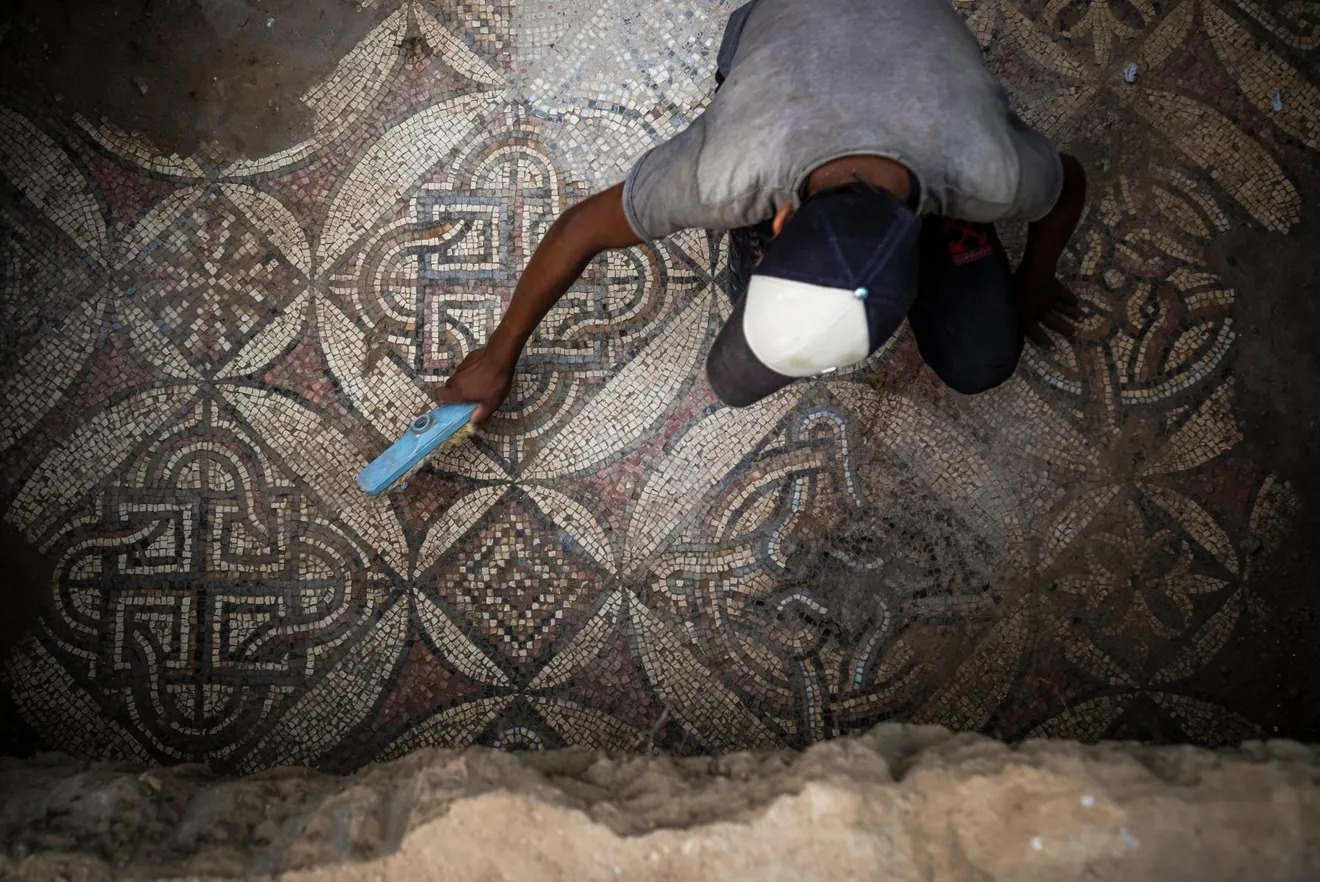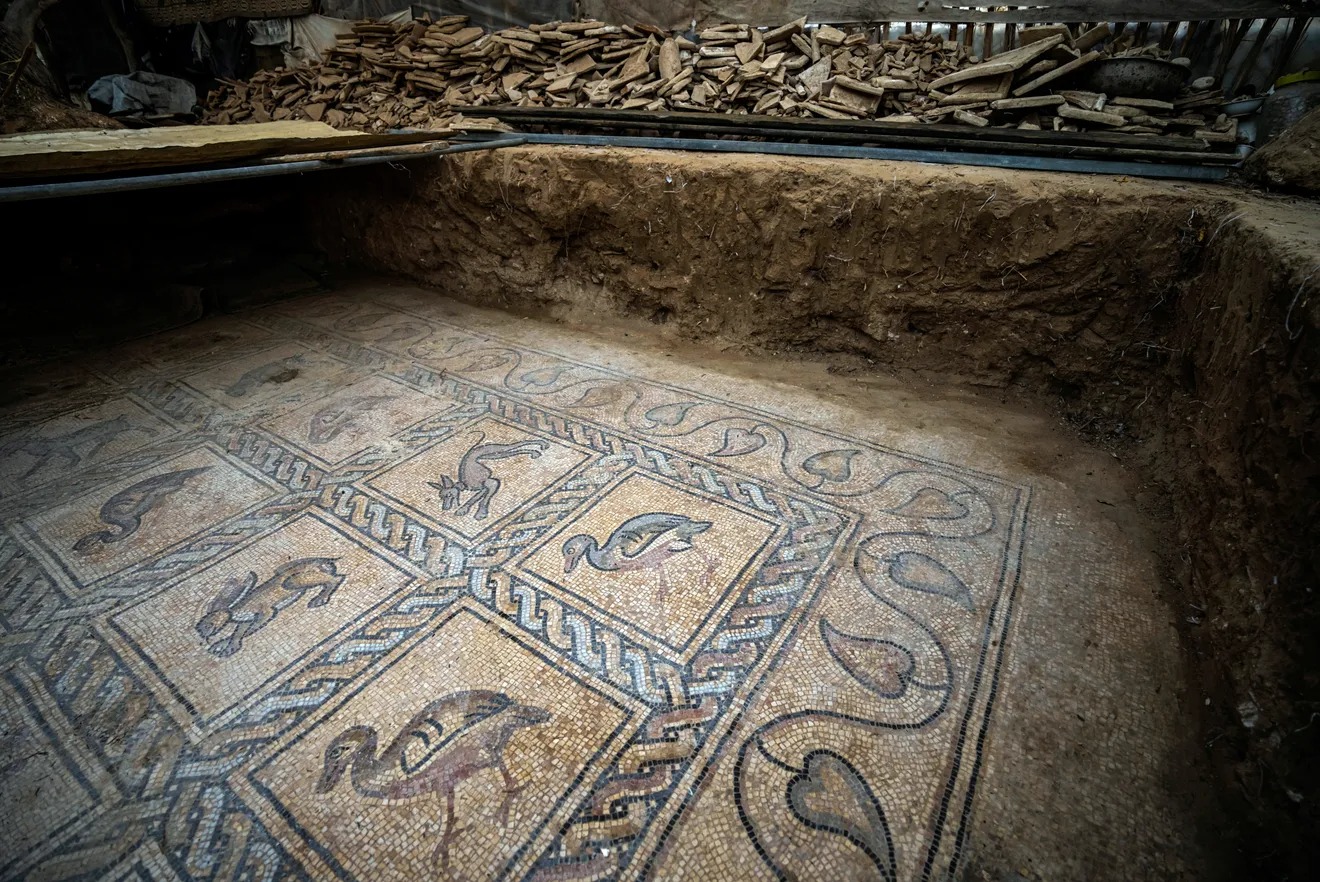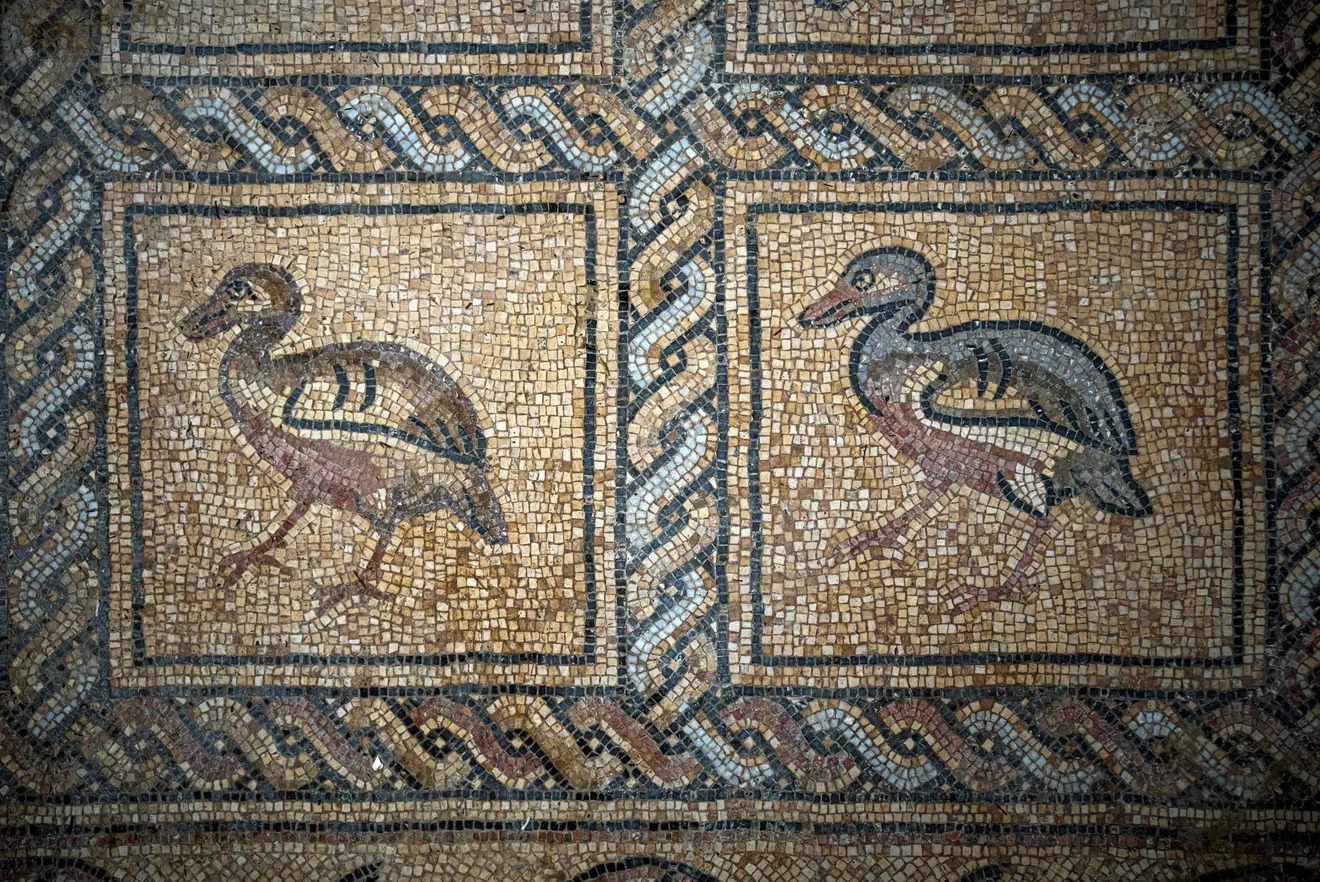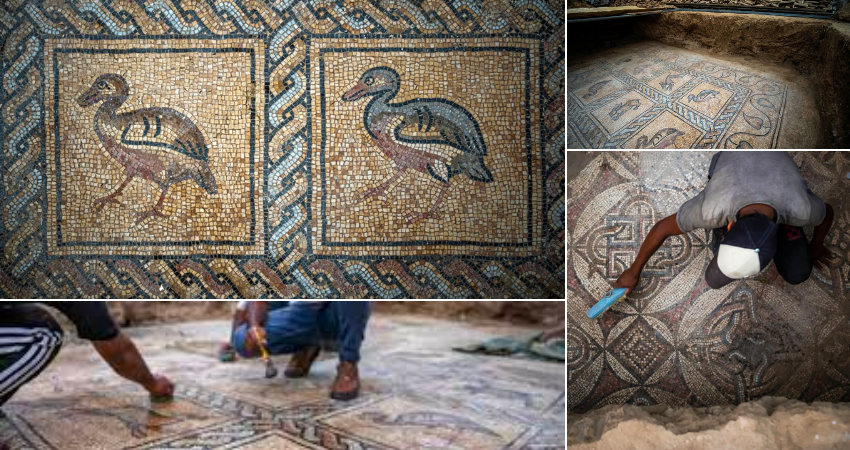BUREIJ, Gaza Strip – Last spring, a Palestinian farmer was planting an olive tree when his shovel hit a hard object. He called his son, and for three months, the pair excavated an ornate Byzantine-era mosaic that experts say is one of the greatest archaeological treasures ever found in Gaza.
The discovery has set off excitement among archaeologists, and the territory’s Hamas rulers are planning a major announcement in the coming days.
But it is also drawing calls for better protection of Gaza’s antiquities, a fragile collection of sites threatened by a lack of awareness and resources as well as the constant risk of conflict between Israel and Palestinian militants.
The mosaic was uncovered just a half mile from the Israeli border. The floor, boasting 17 iconographies of beasts and birds, is well-preserved, and its colors are bright.

“These are the most beautiful mosaic floors discovered in Gaza, both in terms of the quality of the graphic representation and the complexity of the geometry,” said René Elter, an archaeologist from the French Biblical and Archaeological School of Jerusalem.
“Never have mosaic floors of this finesse, this precision in the graphics and richness of the colors been discovered in the Gaza Strip.”


Elter says the mosaic pavement dates back to a time between the fifth and seventh centuries. But he said a proper excavation must be done to determine when exactly it was built and whether it was part of a religious or secular complex.
Elter, who has done research in Gaza in the past, has not been able to visit the site but viewed a series of photos and videos taken by local research partners.
The Gaza Strip, a Palestinian coastal enclave sandwiched between Israel and Egypt, was a bustling trade route between Egypt and the Levant in ancient times. The strip is full of remains of ancient civilizations, from the Bronze Age to the Islamic and Ottoman eras.
But the treasures are rarely protected. In the past, they were looted. In recent years, some were damaged or destroyed by development projects or fighting with Israel. An Israeli-Egyptian blockade imposed after the Hamas militant group took over Gaza in 2007 has ravaged the economy, leaving few resources for the protection of antiquities.
Hamas itself pays little attention to preserving the sites as it struggles to meet the needs of a rapidly growing population. More than 2.3 million people are squeezed in the strip’s 115 square miles.
Among the few preserved sites in Gaza are the St. Hilarion monastery, which spans from the late Roman Empire to the Islamic Umayyad period, and the site of a Byzantine church that was restored by international aid organizations and opened this year in the northern Gaza Strip.
While these sites also have mosaics, Elter said, the latest discovery, in the central Gaza town of Bureij, is “exceptional.”
The Hamas-run department of antiquities described the mosaic as “a big archaeological discovery.”
The owner of the land, who declined to be identified before the official announcement, has covered the unearthed portion of the mosaic floor with tin sheets. He said he hopes to receive compensation for protecting the unique discovery on his property.
The patch of land holding the mosaic is about 5,400 square feet, and three dug-out spots reveal glimpses of the mosaic.
The largest of the holes in the ground, about 6 feet by 9 feet, has the 17 drawings of animals. Roots of an old olive tree have damaged parts of the mosaic, which appears to be about 250 square feet altogether in size.

Leave a Reply